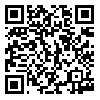BibTeX | RIS | EndNote | Medlars | ProCite | Reference Manager | RefWorks
Send citation to:
URL: http://tumj.tums.ac.ir/article-1-433-en.html

 , Salehipour Z
, Salehipour Z 
 , Pourmand MR
, Pourmand MR 
 , Rahimi Forushani A
, Rahimi Forushani A 
 , Zahraei Salehi MT
, Zahraei Salehi MT 
 , Agha Amiri S
, Agha Amiri S 
 , Bakhtyari R
, Bakhtyari R 
 , Abedi Mohtasab TP
, Abedi Mohtasab TP 
 , Mardani N
, Mardani N 
 , Seyed Amiri S
, Seyed Amiri S 
 , Soltan Dallal MM *
, Soltan Dallal MM * 

Background: Staphylococcus aureus is a major foodborne pathogen throughout the world. Enterotoxins and toxic shock syndrome toxin-1 are important virulence factors and as pyrogenic toxin superantigens have profound effects on the ir host. Thus circulation of TSST1 producing S.aureus among people and food chain is a worrying issue. The present paper was conducted to study Prevalence of tst, entC, entA and entA/C genes in staphylococcus aureus strains isolated from different foods.
Methods: Over 1040 food samples have been analyzed differentially according to Iran national standard (number= 1194) for S.aureus identification. After DNA extraction, PCR reactions were carried out by reference strain as positive control, adequate primers.
Results: At present study, prevalence of foodstuffs contaminated by S.aureus isolates was about 9.5% (100 strains). Of 25% of isolates producing entC, 28% (seven strains) had tst gene at the same time and of 8% of isolates producing entA, 12.5% (one strain) were positive for tst genes simultaneously. Altogether of 9% isolates producing combination of entC and entA, 44.4% (four strains) were also producer of tst gene.
Conclusion: Prevalence of TSST1 producing strains in combination with enterotoxin genes is considerable especially with entC and A plus C. On the other hand, circulation of these isolates in humans, animals, foods and environment has hazardous effect for general public health.
| Rights and permissions | |
 |
This work is licensed under a Creative Commons Attribution-NonCommercial 4.0 International License. |



